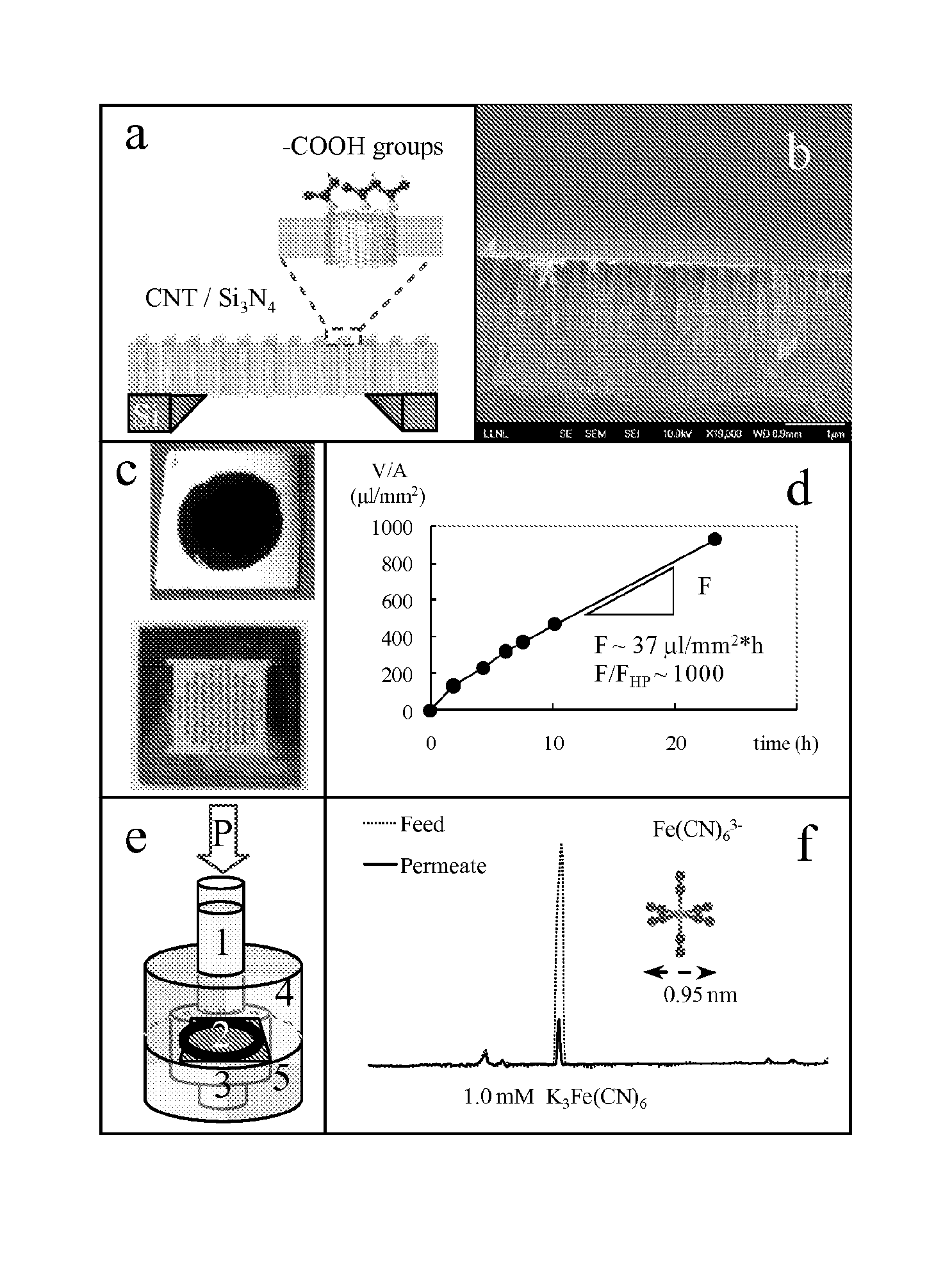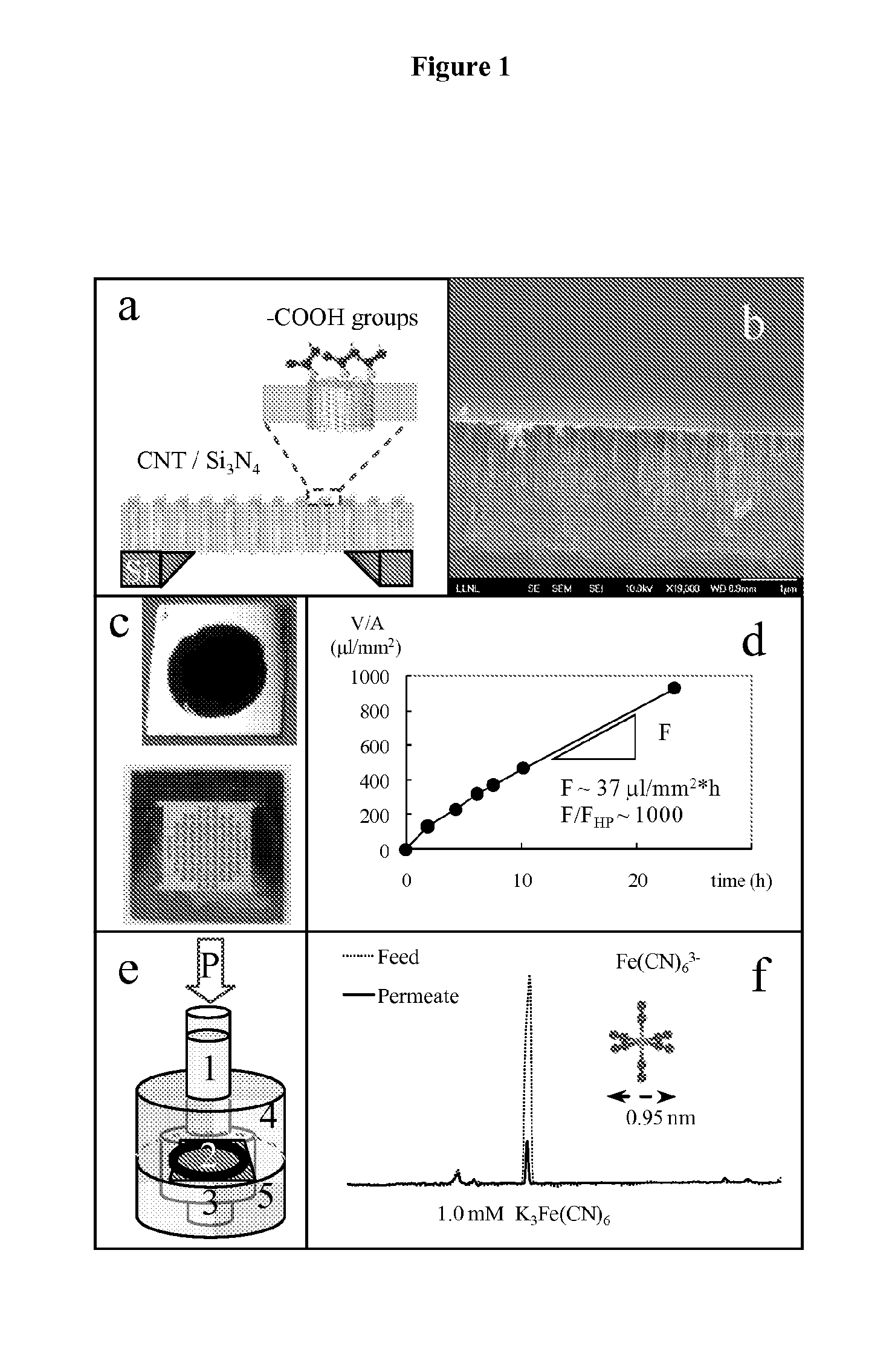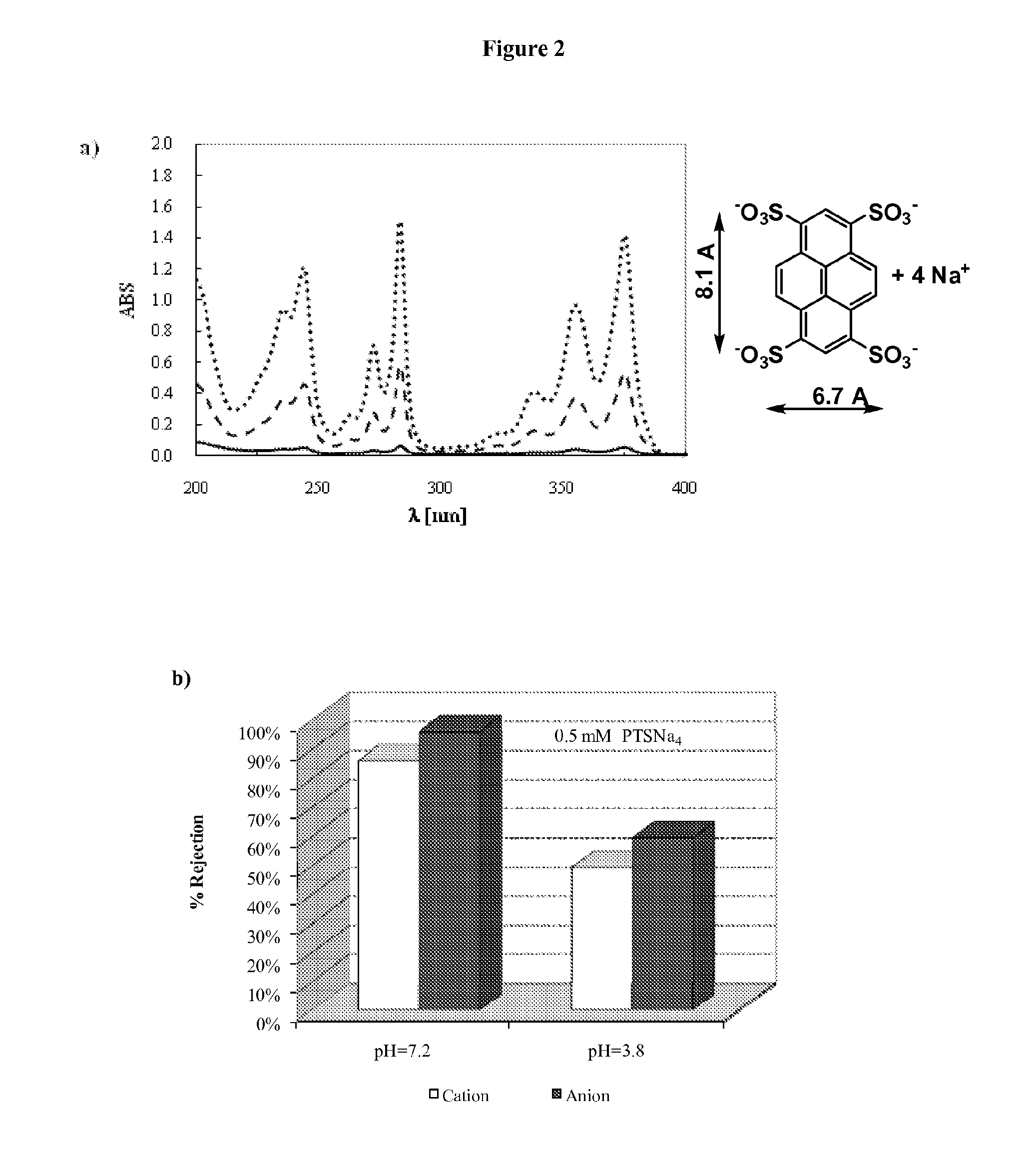Membranes with functionalized carbon nanotube pores for selective transport
a carbon nanotube and selective transport technology, applied in the direction of membranes, filtration separation, separation processes, etc., can solve the problems of large applied pressure, unsuitable for most human use, complex macromolecular nature of these biological machines, etc., and achieve the effect of improving the transport of desalted water
- Summary
- Abstract
- Description
- Claims
- Application Information
AI Technical Summary
Benefits of technology
Problems solved by technology
Method used
Image
Examples
example 1
[0302]In this study, nanofiltration experiments are used to quantify ion exclusion in the sub-2-nm carbon nanotube pores and to investigate the fundamental mechanisms governing ion transport and ion exclusion in this system. Charged nanochannels can utilize both steric hindrance and electrostatic repulsion to achieve ion rejection (Schaep et al. (1998) Sep. Purif. Technol. 14:155-162; Schaep et al. (2001) Sep. Purif. Technol. 22-3:169-179; and Childress & Elimelech (2000) Environ. Sci. Technol. 34:3710-3716). To understand the relative importance of these rejection mechanisms, ion exclusion and selectivity as a function of solution concentration, pH, ion valence, and ion size is investigated. The measurements obtained in this experiment provide an indication that ion rejection in nanopores of this size is predominantly governed by the electrostatic effects and demonstrate that Donnan's membrane equilibrium model (Donnan (1924) Chem. Rev. 1:73-90; and Donnan (1995) (reprinted from Ze...
example 2
[0333]Preliminary experimental data suggest that the DWNT-SiN membranes with CNT tip attached with carboxylic groups outperform typical commercial nanofiltration membranes (without carbon nanotubes) for water softening by providing much larger fluxes at similar monovalent salt rejection or, vice versa, by enabling significantly larger salt rejection at similar water fluxes. For example, a DWNT-SiN membrane rejected 40% of the ion content when a 1 mM KCl solution was filtered at a feed pressure of 10 psi. The corresponding water flux was about 0.63 μl / mm2 min. At the same conditions, Filmtec NF90 and NF270 rejected 35% and less that 10% of the salt, respectively, while allowing water fluxes 5 and 2 times smaller than for the DWNT-SiN membranes. FIG. 7 shows nanofiltration of 1 mM KCl solution at 10 psi. a) rejection coefficient and b) water fluxes measured for DWNT membranes, and commercial nanofiltration membranes NF90 and NF270.
[0334]The comparatively high rejection of the DWNT-SiN...
example 3
Nanofiltration Experiment for Binary Salt Solutions
[0335]Binary KCl / K2SO4 salt solutions with desired composition and constant equivalent concentration were prepared by mixing appropriate amounts of 1 mM KCl and 0.5 mM K2SO4 stock solutions.
[0336]The top chamber (feed) of the filtration cell was filled with about 2 ml of binary salt solution, while the bottom chamber (permeate) was sealed with a small vial containing 1 ml of distilled water to limit permeate evaporation before the analysis of ion concentration. The feed solution was pressurized at 0.69 bar with a controlled nitrogen gas line, while the permeate was at atmospheric pressure. After 150-200 μL, of solution had permeated through the CNT membrane, samples from both feed and permeate were collected for subsequent analysis by capillary electrophoresis (CE). Rejection coefficients for Cl− and SO42− anions were obtained from the ratio of resolved-peak area of the corresponding ion in the CE chromatogram for permeate and feed ...
PUM
| Property | Measurement | Unit |
|---|---|---|
| length | aaaaa | aaaaa |
| inner diameter | aaaaa | aaaaa |
| pressure | aaaaa | aaaaa |
Abstract
Description
Claims
Application Information
 Login to View More
Login to View More - R&D
- Intellectual Property
- Life Sciences
- Materials
- Tech Scout
- Unparalleled Data Quality
- Higher Quality Content
- 60% Fewer Hallucinations
Browse by: Latest US Patents, China's latest patents, Technical Efficacy Thesaurus, Application Domain, Technology Topic, Popular Technical Reports.
© 2025 PatSnap. All rights reserved.Legal|Privacy policy|Modern Slavery Act Transparency Statement|Sitemap|About US| Contact US: help@patsnap.com



